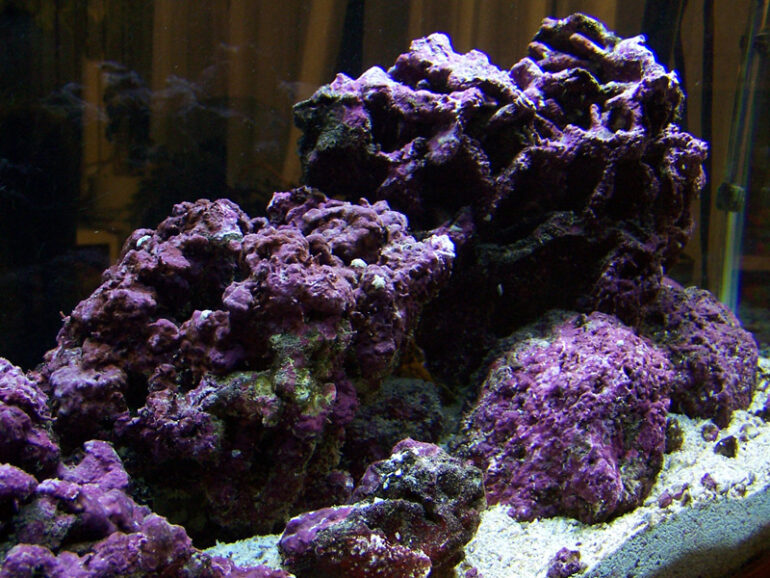“Live rock”: It’s one of the first terms new saltwater aquarium hobbyists hear—and one of the first times (of many) they may find themselves scratching their heads in bewilderment. Let’s clear up the confusion!
What on earth is live rock?
What exactly does this seemingly oxymoronic term describe? Is it another name for a stony coral or sponge? A really cryptic fish like a stonefish, scorpionfish, or frogfish? Some sinister new life form developed in a laboratory by men in white coats with pocket protectors?
Actually, it’s none of the above. “Live rock” is gnarled, porous limestone that has spent time on the ocean floor becoming populated with a wide variety of microscopic and macroscopic marine life. So, no, the rock itself isn’t alive, but the stuff encrusting its surface and populating its myriad pores certainly is.
What fauna and flora might I encounter?
Beneficial bacteria, amphipods and copepods, brittle stars and sea stars, sea urchins, fan worms, bristleworms, snails, sea squirts (tunicates), sponges, pink and purple coralline algae, various macroalgae, crabs, shrimp, anemones, and coral polyps are just a sampling of the life you might find on quality live rock—or that might hatch out/emerge over the weeks and months after placing it in your aquarium.
Why do I want it in my tank?
Live rock performs an array of important functions in a saltwater system, including:
- Biological filtration—aerobic nitrifying bacteria convert deadly ammonia and nitrite to less-harmful nitrate.
- Natural nitrate reduction—anaerobic denitrifying bacteria deep within the rock convert nitrate to free nitrogen gas.
- Provides a foundation/attachment sites for corals and other invertebrates in reef systems.
- Offers an abundance of hiding places for fish and other livestock.
- Encrusting organisms provide a healthy, natural food source for foraging and grazing fish species.
- Creates a natural marine aesthetic for the hobbyist to enjoy.
Where does it come from?
Live rock can be either wild-collected or aquacultured. Wild-collected rocks are essentially chunks of rubble that broke off natural reefs as a result of storm surge and wave action and then settled to the ocean floor where they became populated with a diversity of organisms. Wild harvesting of live rock is illegal off the coast of the continental U.S., so most wild-collected rock on the market originates from various sites in the Indo-Pacific.
Aquacultured/maricultured rock, on the other hand, is terrestrially mined or gathered limestone that has been intentionally placed in the ocean for a few years to become encrusted with life. Live rock aquaculture is legally practiced (though carefully regulated) in U.S. waters (e.g., in the Florida Keys).
Here at Saltwater Smarts, part of our mission is to promote sustainable hobby practices that minimize impacts on the wild reefs, so we strongly encourage you to choose aquacultured livestock—including live rock—over wild-collected whenever possible.



